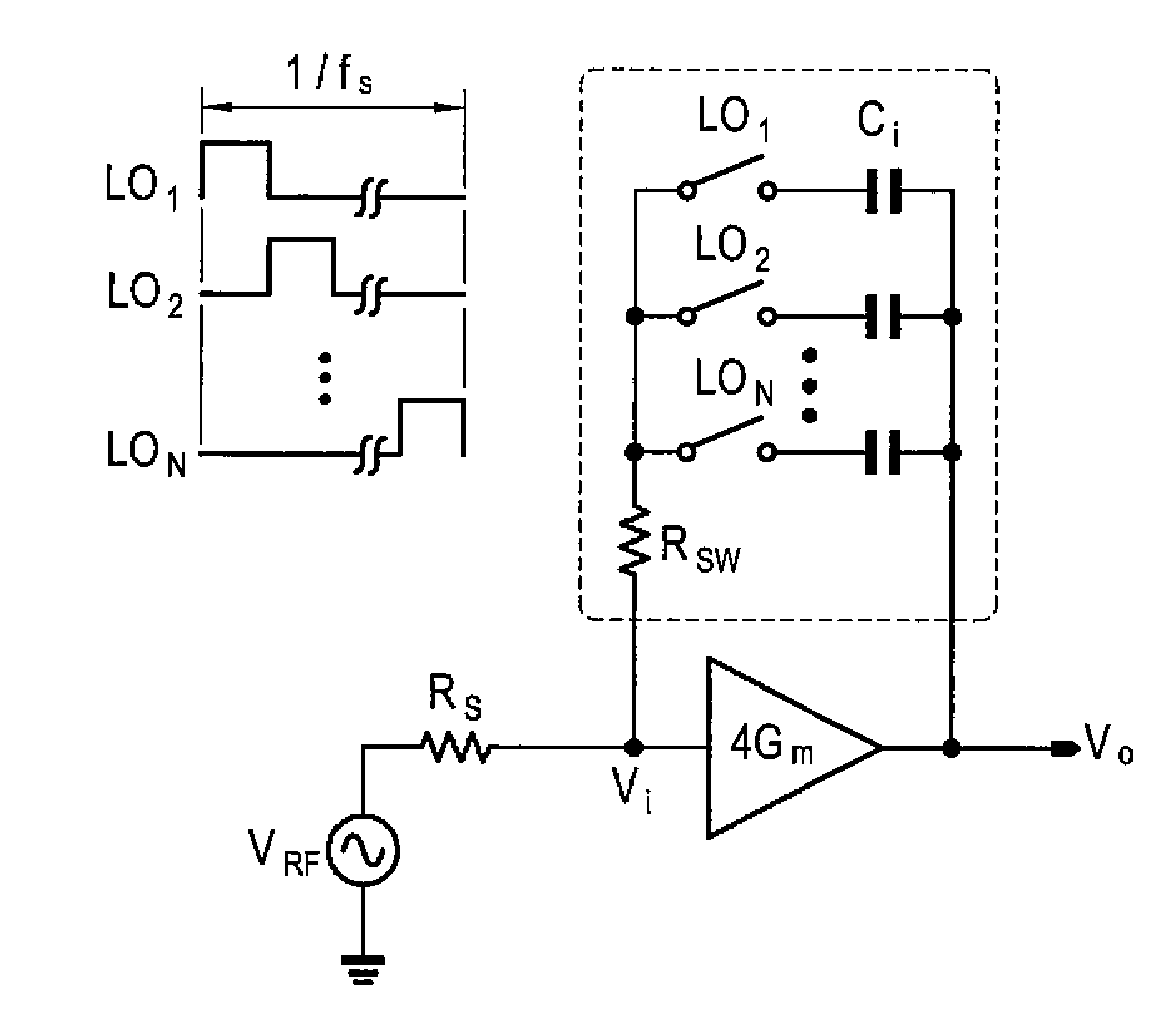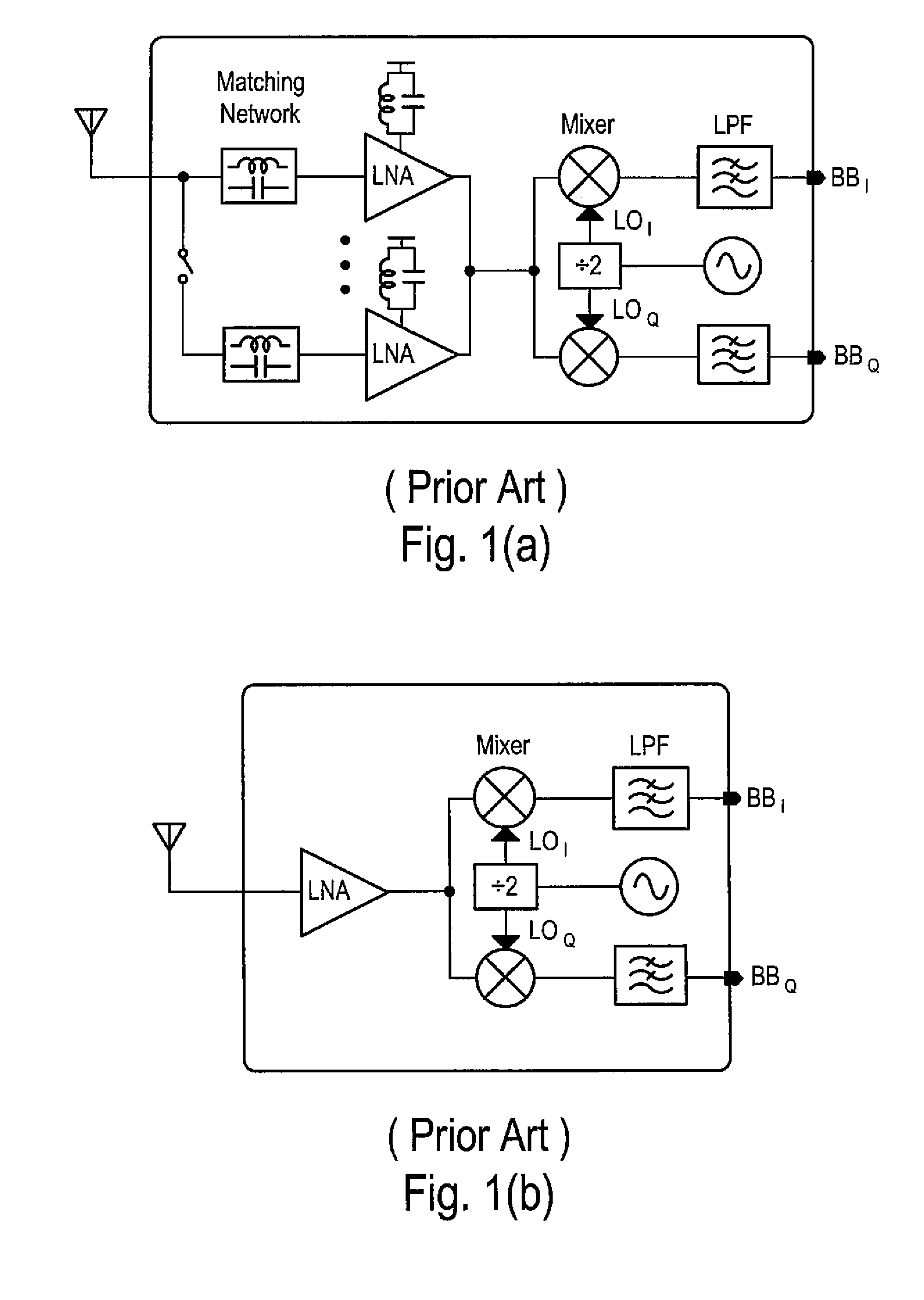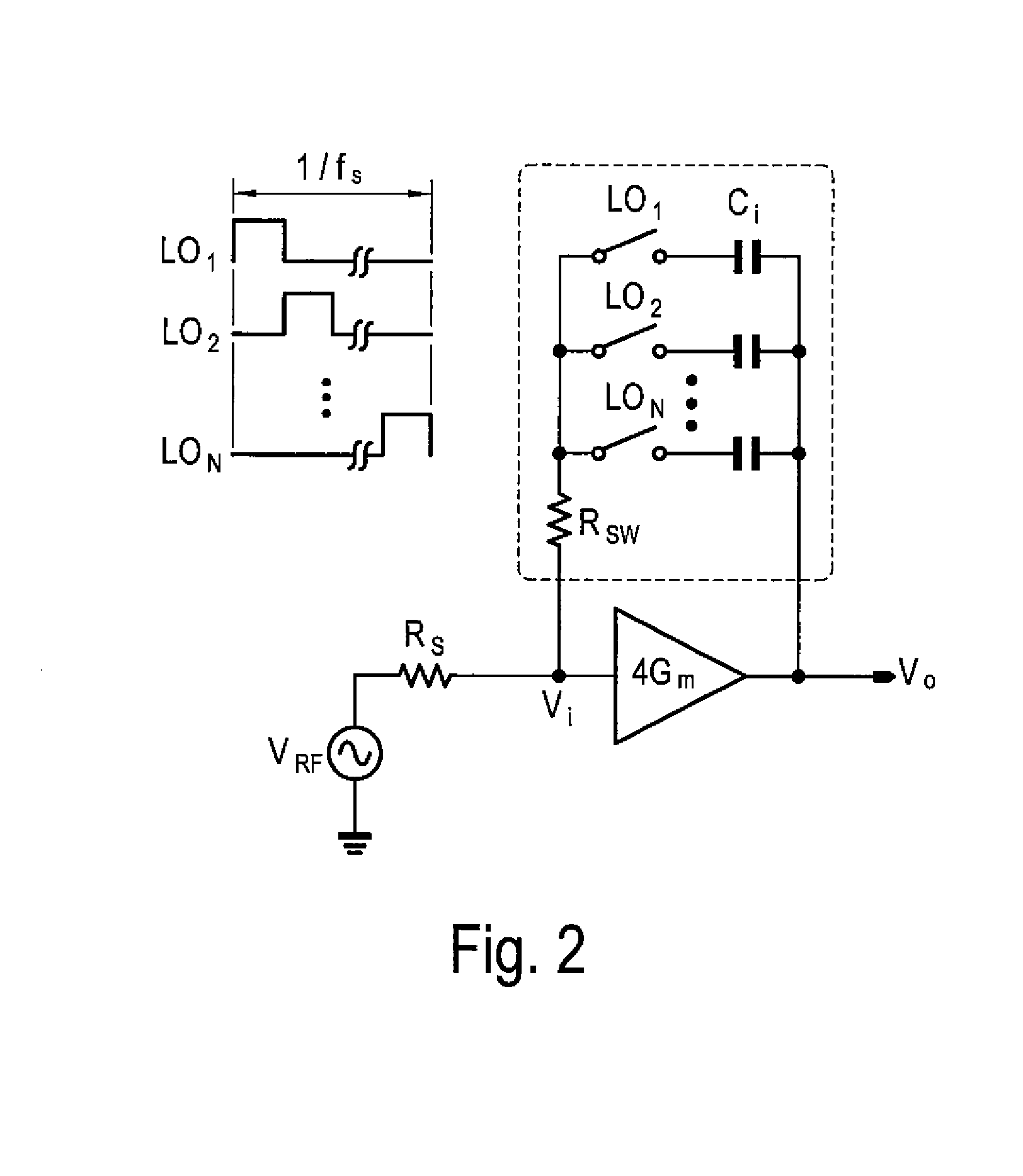Radio-frequency-to-baseband function-reuse receiver with shared amplifiers for common-mode and differential-mode amplification
a receiver and baseband technology, applied in the field of receivers, can solve the problems of generating more harmonic-folding noise by its subsequent mixers, and reducing the power density of wideband receivers
Active Publication Date: 2016-08-11
UNIVERSITY OF MACAU
View PDF10 Cites 6 Cited by
- Summary
- Abstract
- Description
- Claims
- Application Information
AI Technical Summary
Benefits of technology
The present invention provides a radio-frequency-to-baseband-function-reuse receiver with shared amplifiers for common-mode and differential-mode amplification. The receiver includes two sets of networks connected in parallel, each including input and output capacitors, transconductance amplifiers, and switches. The received RF voltage signal is amplified by the transconductance amplifiers and then combined with a baseband voltage signal to produce an output signal at the output terminal of the amplifiers. The technical effect of this invention is to enable efficient amplification of RF signals and the transmission of multiple signals through a single network.
Problems solved by technology
Together with the obvious goals of small chip area, minimum external components and ultra-low-voltage (ULV) supply (for possible energy harvesting), the design of such a receiver poses significant challenges.
Moreover, when the output noise of the LNA is wideband, more harmonic-folding noise will be induced by its subsequent mixers (under hard switching).
All these facts render wideband receivers generally more power hungry than its narrowband counterparts.
Method used
the structure of the environmentally friendly knitted fabric provided by the present invention; figure 2 Flow chart of the yarn wrapping machine for environmentally friendly knitted fabrics and storage devices; image 3 Is the parameter map of the yarn covering machine
View moreImage
Smart Image Click on the blue labels to locate them in the text.
Smart ImageViewing Examples
Examples
Experimental program
Comparison scheme
Effect test
example 2
[0087 includes the subject matter of claim 1, wherein one of the set networks is for I channel and the other is for Q channel.
example 3
[0088 includes the subject matter of claim 1, wherein the first transconductance amplifier and the second transconductance amplifier are arranged in parallel.
example 4
[0089 includes the subject matter of claim 1, wherein the first input capacitor and the second input capacitor are connected in parallel.
the structure of the environmentally friendly knitted fabric provided by the present invention; figure 2 Flow chart of the yarn wrapping machine for environmentally friendly knitted fabrics and storage devices; image 3 Is the parameter map of the yarn covering machine
Login to View More PUM
 Login to View More
Login to View More Abstract
According to another aspect of the present disclosure, a radio-frequency-to-baseband-function-reuse receiver with shared amplifiers for common-mode and differential-mode amplification is provided. The receiver includes two set networks connected in parallel. The set networks includes a first and a second input capacitors, a first and a second output capacitors, a first transconductance amplifier having an input terminal, a second transconductance amplifier having an input terminal, a first switch, and a second switch. The first and the second input capacitors connect to a first node. The first and the second output capacitors connect to a second node. The first transconductance amplifier connects between the first input capacitor and the first output capacitor. The second transconductance amplifier connects between the second input capacitor and the second output capacitor. The first switch connects between the input terminal of the first transconductance amplifier and the second node. The second switch connects between the input terminal of the second transconductance amplifier and the second node.
Description
BACKGROUND OF THE INVENTION[0001]1. Field of the Invention[0002]The present invention relates to a receiver, especially relates to a radio-frequency-to-baseband-function-reuse receiver.[0003]2. Description of the Prior Art[0004]With the continued maturation of the Internet of Things (IoT), a huge market has been opening up for short-range ultra-low-power (ULP) wireless connectivity. The IoT market will be close to hundreds of billion dollars (annually ˜16 billions) in 2020. To bring down the hardware cost of such massive inter-connections, sub-GHz ULP wireless products compliant with the existing wireless standard such as the IEEE 802.15.4c / d (ZigBee) will be of great demand, especially for those that can cover all regional ISM bands [e.g., China (433 MHz), Europe (860 MHz), North America (915 MHz) and Japan (960 MHz)]. Together with the obvious goals of small chip area, minimum external components and ultra-low-voltage (ULV) supply (for possible energy harvesting), the design of su...
Claims
the structure of the environmentally friendly knitted fabric provided by the present invention; figure 2 Flow chart of the yarn wrapping machine for environmentally friendly knitted fabrics and storage devices; image 3 Is the parameter map of the yarn covering machine
Login to View More Application Information
Patent Timeline
 Login to View More
Login to View More Patent Type & Authority Applications(United States)
IPC IPC(8): H04B1/16H03F3/19H03F3/45H03F1/02
CPCH03H19/004H03F3/19H03H19/002H03F3/45076H03F2200/294H03F2200/451H04B1/1638H04B1/16H03B5/1237H03B5/1246H03B2202/06H03H11/0472H03H2011/0483H03F1/0205H03H11/1291H03H2210/025
Inventor MAK, PUI-INLIN, ZHICHENGMARTINS, RUI PAULO DA SILVA
Owner UNIVERSITY OF MACAU
Features
- R&D
- Intellectual Property
- Life Sciences
- Materials
- Tech Scout
Why Patsnap Eureka
- Unparalleled Data Quality
- Higher Quality Content
- 60% Fewer Hallucinations
Social media
Patsnap Eureka Blog
Learn More Browse by: Latest US Patents, China's latest patents, Technical Efficacy Thesaurus, Application Domain, Technology Topic, Popular Technical Reports.
© 2025 PatSnap. All rights reserved.Legal|Privacy policy|Modern Slavery Act Transparency Statement|Sitemap|About US| Contact US: help@patsnap.com



